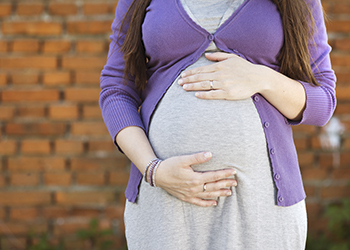
The issue
Women are increasingly delaying childbearing to pursue educational or career goals, or to achieve financial stability before having children. Pregnancies to women at older ages are at increased risk for adverse outcomes compared with pregnancies to younger women. In addition, short inter-pregnancy intervals, more common among women who have delayed childbearing, are associated with increased risks of adverse pregnancy and birth outcomes. Older women have to balance the potential risks associated with short inter-pregnancy intervals against their increasing age, with little data to inform this decision.
The recommended inter-pregnancy interval for the general population is 18-23 months between delivery and subsequent pregnancy. Research by Laura Schummers, a postdoctoral fellow in the Department of Family Practice at the University of British Columbia, aimed to find out whether this recommendation is applicable to women over 30 or whether specific guidelines targeting an older population are necessary. Ms Schummers was co-supervised by UBC Assistant Professor Jennifer Hutcheon, in the Faculty of Medicine’s Department of Obstetrics and Gynaecology.
The research examined data from 148,544 pregnancies in British Columbia over 10 years, from 2004 to 2014. They aimed to study whether the relationship between time between pregnancies and risk of adverse pregnancy outcomes varied by maternal age.
Data sources linked
- Perinatal Data Registry (Perinatal Services BC)
- Hospital Separations (BC Ministry of Health)
- Income band (Statistics Canada)
- Consolidation - demographic (BC Ministry of Health)
- Consolidation - census geocodes (BC Ministry of Health)
- Medical Services Plan billing (BC Ministry of Health)
- Deaths (BC Vital Statistics Agency)
- PharmaNet (BC Ministry of Health)
What did we learn?
- A 12 to 24 month interval between one live birth and the conception of the next pregnancy was associated with the best outcomes for both women and infants.
- For women of all ages, pregnancies conceived within 12 months after a live birth had increased risks.
- For women 35 or older, pregnancies spaced closer than 12 months had increased risks of rare, but serious and life-threatening, complications for the mother. About six out of every 1,000 women age 35 and older who conceived another baby six months after giving birth suffered life-threatening complications. That risk dropped to about three in 1,000 when mothers in that age group waited 18 months. For women 20-34, pregnancy spacing was not associated with these severe maternal outcomes.
- Pregnancies spaced closer than 12 months had increased risks to the baby for women of all ages, with stronger increases for younger women, age 20-34. Among women between 20 and 34 year’s old who became pregnant six months after their last baby was born, 85 out of 1,000 had premature births. That risk dropped by more than half (37 cases per 1,000) when the pregnancies were spaced out by 18 months.)
- One year after birth could be enough time before safely conceiving again for women who would like to have another child as soon as possible.
"For a family that might be considering a pregnancy about six or nine months after a delivery, it might be worth waiting that extra three to six months to lower risks, both to mother and baby.”
Laura Schummers, post-doctoral fellow, Department of Family Practice, University of British Columbia
Making a difference
The study findings may inform pre-pregnancy counseling and public health messaging and provide important information for women and families to consider as they plan the timing and spacing of their pregnancies.
